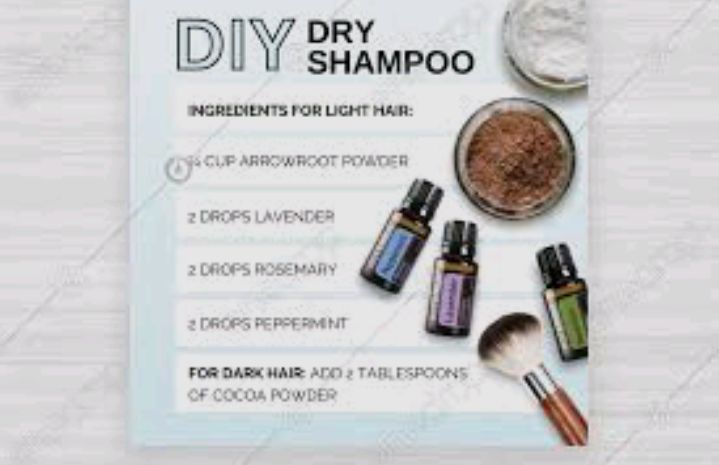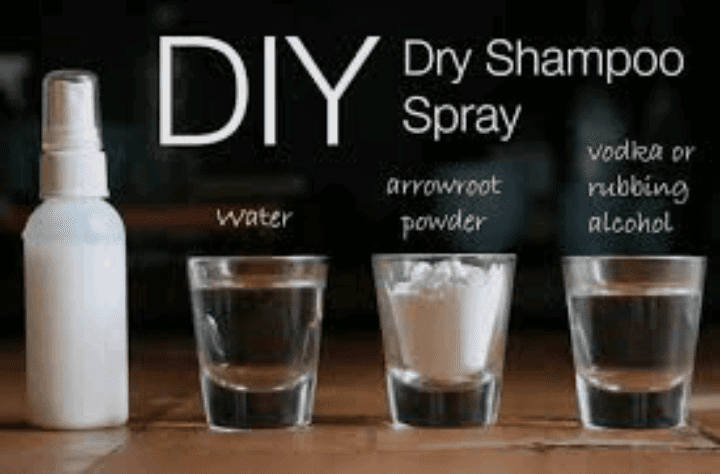In the hustle and bustle of our daily lives, finding time for a full hair wash isn’t always feasible. That’s where the magic of DIY dry shampoo comes in, offering a simple and effective solution to refresh your locks between washes. Whether you’re a busy bee with a packed schedule or just looking to simplify your beauty routine, creating your dry shampoo at home is a game-changer.
Dry shampoo isn’t just a quick fix; it’s a versatile hair care hack that saves time, money, and water. This article will guide you through the world of DIY dry shampoo, providing easy-to-follow steps, essential ingredients, and tips to help you achieve that fresh and fabulous look effortlessly.
No need for complicated processes or expensive products – with a few basic ingredients and a sprinkle of creativity, you can craft your personalized dry shampoo that caters to your hair type and preferences.
We’ll go into the benefits of choosing a DIY approach, from customization to cost-effectiveness and the use of natural ingredients. Whether you’re a seasoned DIY enthusiast or a newcomer to the world of homemade beauty products, this guide is designed to be your go-to resource for achieving salon-worthy hair on your terms.
So, let’s embark on this DIY adventure together and discover the simplicity and joy of making your dry shampoo. Get ready to say goodbye to greasy hair days and hello to the ease and freshness of DIY dry shampoo – your ticket to fabulous hair without the fuss!
Read also: Gnat Trap DIY: A Simple Solution to Banish Pesky Gnats
DIY Dry Shampoo

1. Understanding Dry Shampoo
Before going into the world of DIY dry shampoo, let’s take a moment to understand the concept. Dry shampoo is a powder-based product designed to absorb oil and grease from your hair, providing a quick fix for those days when a traditional wash is impractical.
It comes in various forms, including sprays, powders, and foams, each offering unique benefits. DIY dry shampoo allows you to tailor the formula to your hair type and preferences, ensuring a personalized solution that caters to your specific needs.
2. The Benefits of DIY Dry Shampoo
Why opt for a homemade dry shampoo when there are numerous commercial options available? DIY dry shampoo offers several advantages, including:
- Customization: Tailor your dry shampoo to match your hair color, scent preferences, and specific needs.
- Cost-Effective: Creating your dry shampoo at home can be more budget-friendly than purchasing commercial products regularly.
- Natural Ingredients: DIY recipes often involve natural ingredients, reducing exposure to harsh chemicals commonly found in commercial products.
- Reduced Environmental Impact: By using reusable containers and sourcing eco-friendly ingredients, DIY dry shampoo can contribute to a more sustainable beauty routine.
3. Ingredients for DIY Dry Shampoo
Now, let’s explore the essential ingredients for creating your DIY dry shampoo:
- Base Ingredient: Choose a base like cornstarch, arrowroot powder, or rice flour. These ingredients absorb excess oil and add volume to your hair.
- Absorbent Agents: Incorporate baking soda, activated charcoal, or kaolin clay to enhance oil absorption.
- Essential Oils: Add a few drops of your favorite essential oil for a pleasant fragrance. Options like lavender, rosemary, or tea tree oil also offer additional benefits for your hair and scalp.
- Colorant (Optional): If you have dark hair, consider adding cocoa powder or a small amount of cinnamon to match the color of your roots.
- Dispensing Agent (Optional): For a sprayable dry shampoo, include a liquid element like rubbing alcohol or witch hazel.
Read also: How to Get Rid of Crickets in Houses
4. DIY Dry Shampoo Recipes
Here are two simple yet effective DIY dry shampoo recipes for you to try:
Recipe 1: Basic Powdered Dry Shampoo
Ingredients:
- 1/4 cup cornstarch
- 1/4 cup arrowroot powder
- 2 tablespoons baking soda
- 5-10 drops of essential oil (e.g., lavender, rosemary)
Instructions:
- Mix the cornstarch, arrowroot powder, and baking soda in a bowl.
- Add the essential oil drops and stir until well combined.
- Store in an airtight container.
Recipe 2: Cocoa-Powdered Dry Shampoo for Dark Hair
Ingredients:
- 1/4 cup cocoa powder
- 1/4 cup arrowroot powder
- 2 tablespoons activated charcoal
- 5-10 drops of essential oil (e.g., vanilla, mint)
Instructions:
- Combine the cocoa powder, arrowroot powder, and activated charcoal in a bowl.
- Add the essential oil drops and mix thoroughly.
- Store in a sealed container.
5. Application Techniques
Applying DIY dry shampoo is an art in itself. Follow these steps for optimal results:
- Section Your Hair: Divide your hair into manageable sections for even distribution of the dry shampoo.
- Apply at the Roots: Using a makeup brush or your fingers, apply the dry shampoo to the roots, focusing on the areas that tend to get oily.
- Massage In: Gently massage the powder into your scalp, ensuring it blends seamlessly with your hair.
- Wait and Brush: Allow the dry shampoo to sit for a few minutes to absorb oil. Then, brush or comb through your hair to remove any excess powder.
6. Tips and Tricks for DIY Dry Shampoo Success
Achieving the perfect DIY dry shampoo experience requires a few extra tips and tricks:
- Trial and Error: Experiment with different ingredient ratios and combinations to find the formula that works best for your hair type.
- Storage: Store your DIY dry shampoo in a cool, dry place to prevent clumping or moisture absorption.
- Brushing Technique: Use a natural bristle brush for even distribution and to avoid product buildup.
- Frequency: While dry shampoo is a fantastic quick fix, it’s essential to balance it with regular hair washing to maintain a healthy scalp.
7. Troubleshooting Common Issues
Encountering issues with your DIY dry shampoo? Let’s troubleshoot:
- White Residue: If you notice a white residue, reduce the amount of powder or try a color-matching recipe for dark hair.
- Clumping: To prevent clumping, ensure your ingredients are well-mixed and stored in an airtight container.
- Irritation: If you experience scalp irritation, reconsider your essential oil choices or reduce the quantity.
Read also: Human Health and Environmental Concerns
